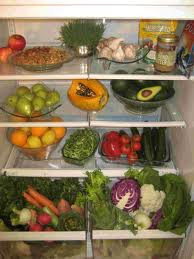Exactly one week since we have returned from our honeymoon at Disney World and I am finally getting some time to start my blog series about the trip. I am not sure yet how many parts there will be, but I am guessing at least six or seven separate entries. Some of the writing will be informative and some of it will describing my own personal experiences; especially in relation to how I managed my illness while traveling.
Today I will be focusing on the hotel we stayed at: Animal Kingdom Lodge. My husband took his kids to Disney years and years ago and stayed at one of the value resorts. I went with college friends about twenty years ago and stayed at a Red Roof Inn somewhere in Orlando. Because this was our honeymoon, we wanted to stay somewhere special and it was very easy for us to decide that we both wanted to stay at Animal Kingdom Lodge (AKL).
During a very scary emergency room visit in February 2012, I asked my then fiancé to talk about something good to distract me from the fact that a doctor had just told me I possibly had a blood clot in my lung (pulmonary embolism) and would need to be admitted. My fiancé began to talk about our honeymoon and how we would stay at AKL with a savanna view so that we could wake up to the animals every day. I argued that it was too expensive but he insisted that it was a special time and not to worry about it. I still joke about how blood clots in my lungs (because yes, I did have them) helped me wrangle a savanna view! Although anyone who knows my husband knows better than that, because he is incredibly generous every day and not just on special occasions.
From the moment we checked in on September 24th, I was blown away by this place. I had read a ton of reviews online and although a lot of them were positive, a lot of people complained about a few particular things, such as how far AKL is from most of the Disney parks. Let me tell you, when I walked into that majestic lobby with all of its beautifully crafted wood, the last thing I cared about was time spent on the bus! Even the front desk looked majestic. And the smell, oh don’t get me started on the smell. Every time we walked through those doors, the aroma of wood and I don’t know what else would assault my senses.
 |
| Animal Kingdom Lodge lobby |
We arrived around 12:30 and our room was not ready because they were going to put us into a room with two queen beds and we decided to wait the extra few hours so that we may get a room with a king bed instead. I guess this is the point where I should tell the whole story about the issues we had the first twenty-four hours with our room.
We got into our room about 3:30pm, unpacked, and immediately left for our 5:15 dinner reservation at The Polynesian. I had medications and food that needed to be refrigerated and put them in there as soon as we got into the room. We left and were gone for about five hours only to come home, grab a drink, and realize it was warm. The fridge wasn’t working. The other major issue was that from the second I walked into the room, I noticed how much it smelled like mold/mildew. It was overwhelming. We figured maybe the room just needed to be aired out and we had left the balcony door open to accomplish this. When we returned from dinner, I called the front desk about the fridge. I was a bit upset although I think I handled it pretty well. I was exhausted from traveling all day and I didn’t know if my injectable medicine or liquid medicine had been affected at all. The food I decided was not worth the risk and we never ate it. They came up to our room at 10pm with a brand new refrigerator and that was that.
The next morning I woke up and my breathing was a little tight, which it has not been in quite some times. I have severe mold allergies and asthma and I was concerned that it was the room. My guess is that the smell had something to do with the fridge not working as that is where the smell was the worse. Plus, it was just disgusting. For $400/night, our room should not smell. Actually, most of that hallway smelled. We spoke with the front desk and they said they would assign us a new room. That proceeded to take all day. We had agreed to a handicap accessible room so as not to lose the king sized bed. Meanwhile we had to repack all our stuff and leave it with bell services while we were at the park. There was a lot of miscommunication throughout the day and finally at 4:30pm, our new room was ready and we unpacked all over again just in time to make our next dinner reservation.
Because of the inconvenience, the hotel upgraded our room. I was a bit confused at first because I though the only room better than a savanna view room was a suite and this certainly wasn’t that. At AKL there is a $40/night difference in room price between the Uzima view, which was our first room and the Arusha view, which was our new room. One of the other issues was that there were minimal animals on the Uzima savanna the first 24 hours we were there so this mold and room change issue ended up working out for us because we LOVED the new room with the Arusha view. We frequently had zebras, giraffes, elands, springbok, pelicans and all kind of other animals right outside our balcony. Plus the new room was closer to the lobby, without being too close, which was very helpful for me in getting to the bus stop.
Once we were in our new room, we never had another issue with the hotel. We absolutely loved the place. They had plenty of hotel related events and experiences available so that you could learn more about the African culture. Chuck and I both enjoyed chatting with the staff, most of whom were from various parts of Africa. It appeared that they all truly enjoyed their jobs and really went out of their way to make our experience enjoyable.
 |
| View from our balcony |
There are two parts to AKL: Jambo House and Khidani Village. They each have their own bus stop. We stayed at Jambo House and Khidani Village is a Disney Vacation Club location so you have to be a member to stay there I believe. The pool and surrounding pool area is probably the best I have ever enjoyed. There is a zero entry pool which is wonderful for people with disabilities as well as two secluded hot tubs. There is a pool bar, which I found delightful, because they had this awesome frozen drink called a Moscato Colada (SKYY Infusions Moscato Grape, Vodka, Blue Curacao, pina colada mix, and passion fruit/mango foam) and it was nice to have a place to hang out and just enjoy being on vacation. It was a good place for me because AKL property is loaded with trees which meant more shade to keep me from getting sick. I would have liked to have spent more time there but well, there are only so many hours in a day. And only so many days in a vacation!
The gift shop at AKL was probably my favorite as it had so many different types of things. I also liked the fact that in an Disney park, you can have your order sent to your hotel gift shop so that you are not lugging packages around all day. It’s the small things…
I found the food at AKL amazing. On the second night, when we finally were settled in our new room, we ate at Jiko. Jiko is their fancier restaurant and it was really quite a treat. You know you’re in a top quality restaurant when they put the linen napkin on your lap for you. I tried a South African Shiraz wine called Jam Jar and fell in love with it, maybe a little too much so! The chef came out to talk to me to discuss my food restrictions and she made me my own meal (meaning not on the menu) of sirloin steak with a rice/quinoa medley. The appetizer was the best though. It was an African plate I wanted to try with pita bread and different African dips/toppings. I told the chef this and she brought the pita for my husband and brought me something called pappadam, which is made from lentils and is like a very thin tortilla with spices, also gluten/dairy-free. It was very peppery which was right up my alley. The dips included bhuna masala, sagh dahl, Moroccan chermoula, and kalamata hummus. The only one I didn’t like was the kalamata hummus because I don’t like olives. I found the tastes to be exquisite, which surprised me since I used to be such a picky eater.
There is a quick service cafeteria at AKL but we never ate there. However we did eat at another AKL restaurant called Boma. Oh, how I loved Boma! Reason being was that it was a buffet so I could try different dishes I was unfamiliar with and not be stuck hungry because I didn’t like my meal. I also liked it because there were some familiar foods created with African flavor. For example, there was a cucumber salad that I just couldn’t get enough of as well as a cabbage slaw infused with spices. This is also where I tried bobotie for the first time. Bobotie is a South African dish made with minced meat, egg, and some yummy spices. Yes, I just said yummy! It’s all baked together and I think I could have eaten it every day I was there. I did not do gluten/dairy-free at Boma and I am pretty sure the bobotie had bread crumbs in it but I gave myself the leeway considering I was on a good dose of prednisone to protect me. I did that for a few other meals as well during our trip.
We did not have too much trouble with the driving distances from AKL to the parks, but we were there during one of Disney’s lowest seasons. I found that it depended on the time of day you attempted to travel. I also heard complaints about having a hard time getting on the bus if you were in a scooter, because the buses could only take so many scooters at once. Again, not a problem for me. We found the most difficult bus trips were to Downtown Disney and Typhoon Lagoon which can take as long as an hour, depending on traffic. The second furthest destination was Magic Kingdom and the ride took anywhere from fifteen-thirty minutes.
This was my philosophy for our trip (and it came in handy during the room fiasco): We were on our honeymoon and no way in hell was I going to let anything freak me out. When you stay on Disney property and use their bus transportation, you have to accept that at times, it may be slower going than if you have a car. And you’re on vacation, so relax. Overall, I liked the fact that AKL was more removed from all the busyness and craziness of Disney. It was a nice retreat to go to at the end of the day and enjoy being on vacation. We had seen a few other resorts during our stay and I have to say, we saw far less children at AKL compared to those other resorts. I love kids more than anything but well, I don’t have any and I was on my honeymoon. I was more than fine with leaving them behind at the Magic Kingdom!
Despite the inconvenience of our first twenty-four hours at AKL, I would definitely stay there again: the architecture, the smells, the music, and the food; all an experience I will never forget.




